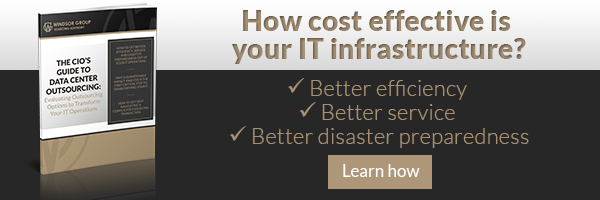 As this year draws closer to an end, we’ll undoubtedly see a spate of predictions as to where data center outsourcing is headed in 2015. A look back at recent past predictions gives us a good idea what many of those data center outsourcing trends are likely to be. While some companies have positioned themselves at the leading edge in adopting the latest trends, many more are still a work I progress, underscoring the fact that trends represent a continuum, not a destination.
As this year draws closer to an end, we’ll undoubtedly see a spate of predictions as to where data center outsourcing is headed in 2015. A look back at recent past predictions gives us a good idea what many of those data center outsourcing trends are likely to be. While some companies have positioned themselves at the leading edge in adopting the latest trends, many more are still a work I progress, underscoring the fact that trends represent a continuum, not a destination.
Back in 2012, Gartner issued a report that outlined several IT projections for 2015. For enterprises that have not yet achieved these milestones, there is still one more year to meet Gartner’s projected timeline. Some of these data center outsourcing trends include:
- Getting a grip on energy usage. Gartner suggested that by 2017, energy management would become an “enterprise-level discipline.” Many organizations are choosing data center outsourcing as a way to eliminate or significantly reduce energy consumption.
- Increased mobility. Gartner called it a “seamless shift between computing and communicating.” Along with increased interest in BYOD/T, organizations are dealing with more complex architecture and operations, new ways of addressing governance and security and the rise of a remote, cloud-based workforce. Not to mention an increasingly cloud-based clientele.
- Hybridization. Another area where some companies have taken the plunge and others are yet to stick their toe in the water, hybridization continues to be one of the most prominent data center outsourcing trends. Enterprise-specific customization of data center alternatives has significantly enhanced a company’s ability to make the most of transformation, by sculpting solutions in their own image for maximum productivity and profitability.
- Just the facts. Gartner noted that successful enterprises will be the ones that consider IT decisions based on results, not personal preferences or anecdotal “opportunities.” Optimizing spend may now take precedence over pure cost reduction, but only those with the sharpest pencils will know if they have a valid business case for change and be able to implement that change in the most cost-effective way.
- Streamlining. Gartner warned that big data would quickly grow out of control for companies ignoring the problem. They recommended virtualized storage, deduplication and detailed assessment of data inputs to identify top priorities and eliminate the unnecessary. Many companies are using outsourcing to offload all but their key priorities, to achieve leaner operations and enhanced focus on corporate business goals.
- Gartner further stressed virtualization as the key to unlocking major IT benefits such as increased automation, simplified design, policy-based management and better system integration. They noted that sweeping changes would affect people as much as infrastructure and processes.
The underlying themes here are flexibility and focus. It’s clear that Gartner’s predictions are still valid and that there is a substantial role for data center outsourcing as a means to those ends.
What else can we look forward to in 2015?
Balancing short-term needs and long-term investment to make the most of emerging technology trends. In theory, businesses have everything to gain – more assured competitiveness, new ways to reach and engage with customers and employees, greater efficiencies and cost control.
But no company is in a position to indiscriminately grab at every innovation that comes along, because there are risks as well as benefits. A “future forward” enterprise will need to find the balance that assures adaptability while managing risk.
Among other things, the fact that IT is now an interdepartmental effort and not a stand-alone cost center means IT budgets are increasingly tucked throughout the corporate spreadsheet. That makes deep, accurate internal assessment of services and costs all the more critical as companies evaluate transformative opportunities.
Regardless of the details described by data center outsourcing trends for the coming year, the only way companies can be truly strategic is to think and plan holistically.


